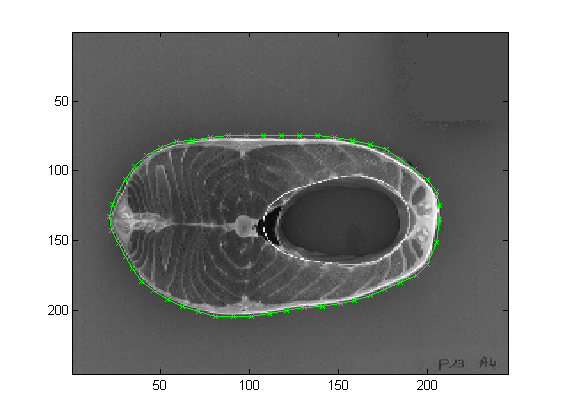Abstract: An essay on the law regulating bulk email or “SPAM” written in January 2009 for an Internet Law module, whilst studying Computer Science at the University of Southampton. Assesses the functionality of the current law and legal policy regarding unsolicited bulk email or “Spam”, and how should it develop in future. Discusses the severity of the problem, the EU provisions made in the E-Privacy directive, the Information Commissioner’s policy and enforcement powers, the 2 examples of relevant UK case law (Roberts v Media Logistics and Microsoft v McDonald), phishing attacks, other jurisdictions, international cooperation (including “SpotSPAM” and the USA’s “SAFE WEB Act”), and routes to effectively tackle the problem. Criticises the current law and argues that the legal regulation is required but that it should take the form of statutory duties on ISPs to encourage them to adopt various simple counter measures including egress filtering and domain authentication.
Archive for the ‘Papers and projects’ Category
SPAM law
Friday, March 27th, 2009Concurrent programming using Actors and Linear types
Friday, March 27th, 2009This third year project was submitted in May 2008 for award of Computer Science MEng, whilst studying at the school of Electronics and Computer Science, University of Southampton, UK.
Abstract: A project investigating and developing an implicitly concurrent programming language, based on a metaphor taken from the physical world is reported. The project is introduced and key background ideas explained making the case for a programming paradigm where programs consist of systems of autonomous agents, or active objects which communicate via message passing. A literature search researching the development of a similar paradigm called the “Actor model” is reported and criticised. A language enhancing Java with actors and linear types is defined and key decisions are discussed. Translation rules to reduce the language into Java are presented, and a prototype translator is developed. Example programs are written, compiled, and executed to evaluate the usefulness of the language. Conclusions are drawn and the language found to provide a familiar notation for implicit parallelism, and a compelling new model for concurrency, combining the performance of shared variables with the elegance of message passing. Finally further work is suggested to extend and refine the language, and its implementation.
Piercing/lifting the Corporate Veil
Friday, March 27th, 2009Abstract: An essay on corporate immunity and lifting the corporate veil written in May 2008 for an Industrial Law module, whilst studying Computer Science at the University of Southampton. Introduces the concept of corporate personality or “the Salomon Principle” in the Companies Act 1862 and Salomon v Salomon 1896, and then the concept of “piercing the corporate veil”. The law governing the circumstances under which this is permitted is analysed, with particular reference to corporate group structures. In doing this a key case, Adams v Cape Industries plc 19917 is discussed and its outcome criticised, whilst some possible routes to reform are noted.
Employment law & discrimination
Friday, March 27th, 2009Abstract: An essay on the legal protection against discrimination in employment written in April 2008 for an Industrial Law module, whilst studying Computer Science at the University of Southampton. Discusses how effective the law is in protecting workers from discrimination. Discusses sexual and racial discrimination, the disability discrimination act, harrassment and various cases where the common law was not sufficient to grant justice.
Behaviour Based Malware Detection
Friday, March 27th, 2009Abstract: This article looks at the future of antivirus technology in IT security, discussing some of the latest malware threats and counter developments. We specifically examine key developments in proactive malware detection based on real-time behavioural analysis, to combat 0-day threats. (Written in Jan 2008 for an IT Security module whilst studying Computer Science at University of Southampton, UK).
Rights of third parties
Friday, March 27th, 2009Abstract: An essay on the rights of third parties in contract law written in 2007 for an Industrial Law module, whilst studying Computer Science at the University of Southampton. Reviews the doctrine of “privity of contract” with respect to Lloyds v Harper and discusses the extent to which the law of England and Wales now allows a claimant suing on a contract, to recover for losses suffered by a third party.
Innominate/Intermediate terms
Friday, March 27th, 2009Abstract: An essay on “innominate terms” in contract law written in 2007 for an Industrial Law module, whilst studying Computer Science at the University of Southampton. Discusses whether since “innominate terms” were recogised as legitimate in Hongkong Fir Shipping v Kawasaki they should replace the existing categories of “conditions” and “warranties”.
Bayesian networks
Friday, March 27th, 2009Abstract: Reports the results of an assignment to investigate uncertain/stochastic reasoning using “Bayesian Networks” written in 2007 whilst studying Computer Science at the University of Southampton, UK. Models a problem using a bayesian network in MatLab, generates 100,000 sample events, and calculates the probabilities of various combinations of events. Finally uses this information to compare likelihood ratios. (Latter sections may well be incorrect…)
Greedy Image Contour Extraction
Friday, March 27th, 2009Abstract: Assignment to investigate the “Greedy ICE” (Image contour extraction algorithm) written in 2006 whilst studying Computer Science at the University of Southampton, UK. Implements the algorithm in MatLab, evaluates its accuracy and time complexity, and then tries out 3 extensions: an edge filter, noise reduction filter and Earea term (to encourage the contour to converge around concave shapes).
